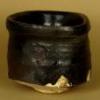-
Posts
6,786 -
Joined
-
Days Won
10

cabowen replied to Ed Hicks's topic in General Nihonto Related Discussion

cabowen replied to bigmuddy's topic in Translation Assistance

cabowen replied to lethalcurves's topic in General Nihonto Related Discussion

cabowen replied to lethalcurves's topic in General Nihonto Related Discussion

cabowen replied to manfrommagnum's topic in Translation Assistance

cabowen replied to manfrommagnum's topic in Translation Assistance

cabowen replied to manfrommagnum's topic in Translation Assistance

